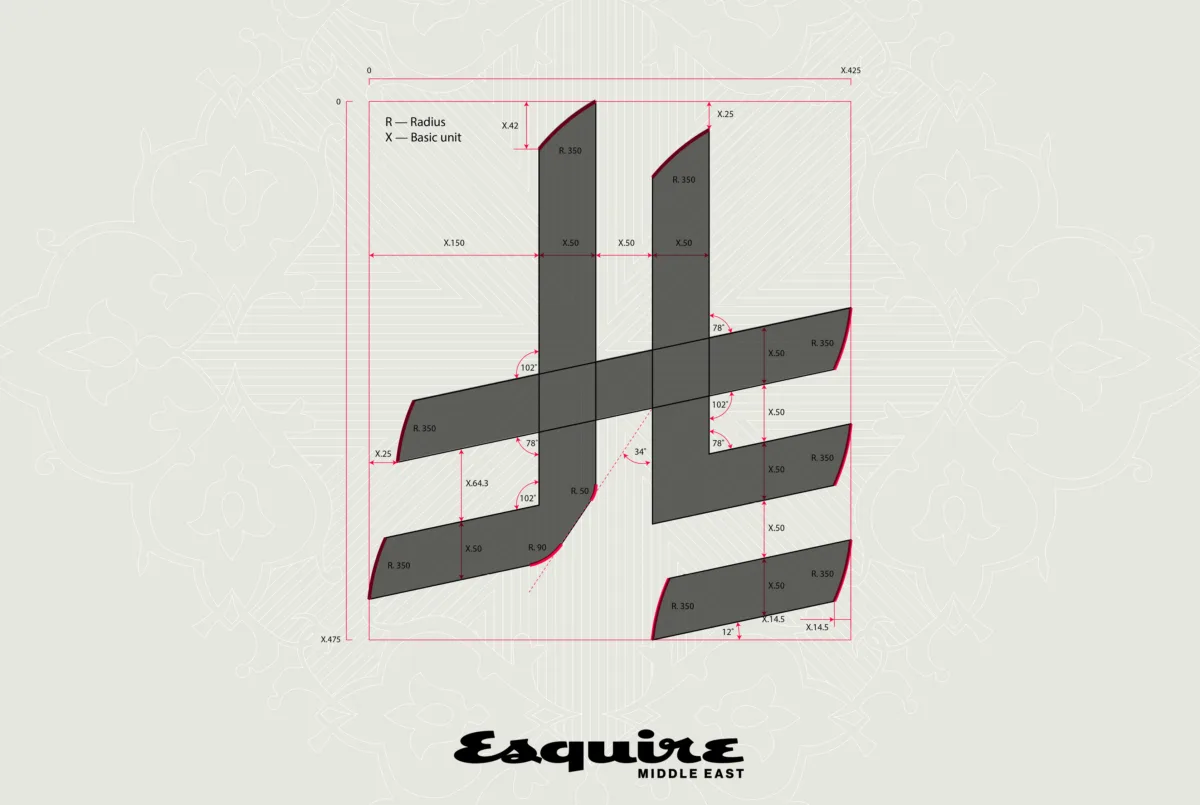A country’s currency functions as a flag of sorts, representing a nation’s identity and values.
In this spirit, the Saudi government has unveiled a newly designed symbol for its national currency, the Riyal—a significant move aimed at emphasizing the Kingdom’s rich cultural heritage, as well as strengthening its financial identity on local, regional, and international levels.
Thoughtfully designed, this symbol embodies key narratives and values of the Kingdom. But, before diving into its significance, a quick history lesson on currency symbols around the world. Switzerland is generally the first port of call when it comes to both banking and currency. The Swiss Franc (CHF) originated in 1798 through various institutions but was only officially established as the country’s legal tender in 1850. Over time, it has become a global symbol of stability, reliability, and prestige—much like Switzerland itself.
In the United Kingdom, the pound sterling derives its name from the Latin “libra,” meaning balance or weight. This is why the symbol (£) features an “L,” though the horizontal line in the middle remains a mystery—perhaps representing a scale? The Bank of England issued its first banknotes over 300 years ago, evolving significantly since then. The pound coin first appeared in 1489 under Henry VII, while handwritten banknotes started circulating in 1694, shortly after the Bank of England was founded.
Japan’s yen (¥) was officially adopted in May 1871. Initially, the yen was defined as 24.26 grams of pure silver or 1.5 grammes of pure gold. The word “yen” (pronounced “en” in Japanese) translates to “round object,” describing the shape of coins. Interestingly, some believe the “Y” in the symbol was introduced due to foreigners pronouncing “en” with a “y” sound.
The Euro (€) emerged after extensive discussions among EU members. Initially, the currency was supposed to be called the ECU, but “Euro” proved easier to adopt. Officially launched in 2002, its symbol takes inspiration from the Greek letter epsilon (Ɛ).
The origins of the U.S. dollar ($) trace back to an unexpected source—Spain. In 1785, the newly formed United States modelled its currency after the Spanish peso, which had been widely used in the Americas during Spanish colonization. Even after Anglo-Saxon control took over, the “Spanish American Peso” remained in circulation until the U.S. dollar was formally introduced in 1792. The “S” in the dollar symbol is believed to have stemmed from the Spanish currency. As for the two vertical bars—many theories exist, but their true origin remains uncertain. Additionally, the word “dollar” comes from “thaler,” a German term referring to silver coins, which was later adapted by British colonists.
This returns us back to the new Riyal. As currency functions as a form of national identity, the Saudi government’s newly unveiled symbol for the Riyal emphasizing the Kingdom’s rich cultural heritage.
The term “riyal” dates back to the first issuance of Saudi currency in 1346 AH (1927) under King Abdulaziz, the founder of modern Saudi Arabia. This marked the establishment of the Kingdom’s unified national currency. Inspired by Arabic calligraphy, the new Riyal symbol is designed to enhance Saudi Arabia’s presence in global financial markets and reinforce national identity in alignment with Vision 2030.
Developed following a royal decree, the initiative involved key Saudi institutions such as the Ministry of Culture and the Ministry of Media. It is both a tribute to tradition and a step toward the goal of greater global integration.
The newly introduced Riyal symbol comes with strict design regulations, including its placement (always to the left of numerical values, with a space in between for clarity) and proportions (its height should align with surrounding text, with the direction of the text dictating its placement).
A currency is more than just a reflection of national values—it is also deeply tied to one of the most complex corporate systems in existence: the banking industry. As Saudi Arabia moves forward with its Vision 2030 goals, the new Riyal symbol is not just a design change; it is a statement of the Kingdom’s growing influence on the global financial stage.
Cyril Zammit is design consultant and design expert based in Dubai. Follow him @cyrilzam; cyrilzammit.com
